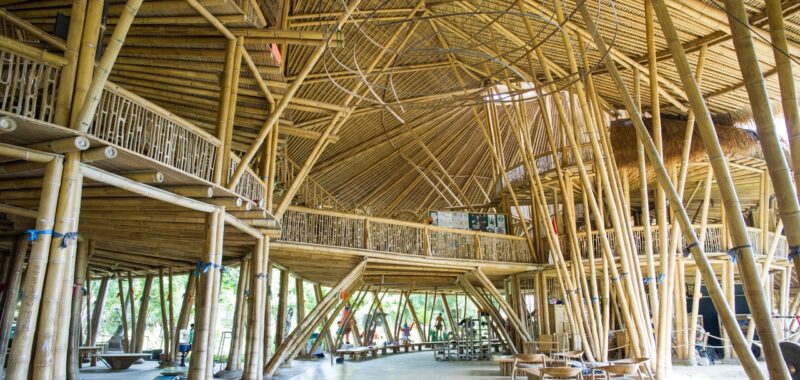Not only are these sustainable features better for the earth, they help students too. “Daylight turns out to be very important,” Lisa Gelfand, principal at Gelfand Partners Architects and author of Sustainable School Architecture: Design for Elementary and Secondary Schools says about factors that have been proven to affect student achievement. Lee Fertig, head of school at the Nueva School, explains how he has noticed this impact. “We see that natural light actually inspires learners and teachers in an educational setting,” he adds.
At Green School Bali, another sustainable school, the approach to sunlight is simplified to its barest bones—literally and figuratively, with the majority of the buildings on campus bearing no walls at all. “I’m in one of the few buildings here with windows,” reports Benjamin Freud, Head of the Upper School at Green School Bali, during an interview with AD. “And that’s because of privacy,” he added.
Eliminating walls from building construction both reduces the carbon footprint of materials and reduces the operational cost of having to regulate the temperature within the buildings. It also encourages greater interactions with the natural world in which the campus sits, as students traveling from class to class are immersed in the surrounding jungle.
Designed as a series of skeletal arches made from locally sourced bamboo, one of the most eye-catching buildings on campus at Green School is the Arc, a space used as a gymnasium and gathering space for assemblies.
Unique in its construction, the building is held up by tensioned anticlastic gridshells; “the two systems together create a unique and highly efficient structure that acts in flexion instead of compression,” says Elora Hardy, founder and creative director of IBUKU, the firm that designed the Arc. The floor of the space is made from 80% recycled airplane tires, yet another example of thoughtful material sourcing that minimizes waste. In addition to its sustainability factors, the space also provides students with ample fresh air, which has been proven to improve performance and raises test scores.


%2520-%2520IMG_9834.jpg)